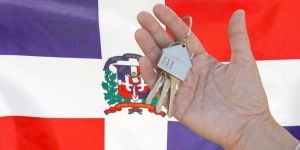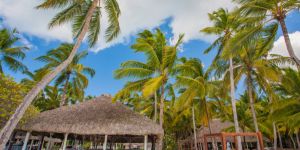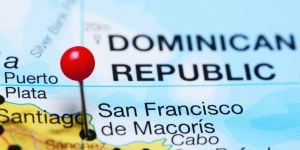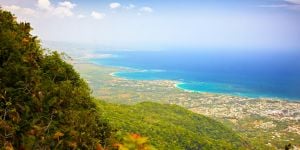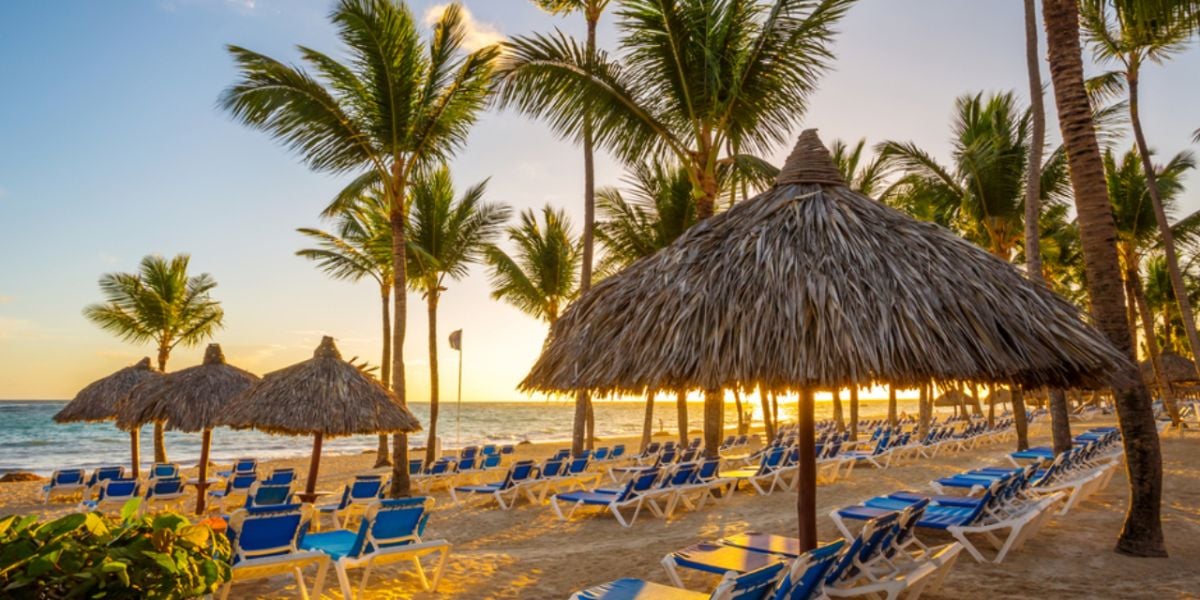
If you move to the Dominican Republic, finding suitable accommodation will be one of your top priorities. This article will provide more information on which part of the country might be best to live in and how to find accommodation.
The Dominican Republic is a desirable destination for expatriates. Over the years, foreigners have successfully settled in its different regions in large numbers. The country indeed offers a pleasant environment and a warm climate, which are ideal whether you want to make a short or an extended stay there, but if you wish to settle there permanently, it is best to be aware of its different regions, what they have to offer, and which might suit you best.
Where to live in the Dominican Republic
The island of Hispaniola, which the Dominican Republic shares with Haiti, is the second-largest island in the Caribbean after Cuba, covering around 19,000 square miles. Although it has over 1,000 miles of coastline, with the Caribbean Ocean to the South and Atlantic to the North, it is also home to the highest mountain range in the Caribbean, located in the center of the country, with several other smaller mountain ranges in the Southwest, North, and Northeast.
Assuming that you don't have restrictions on where to live, several considerations will be necessary when choosing where to reside.
Mountains or beach?
Many think they wish to live on or near the beach, which is the very reason many people decide to live in the Caribbean, but there are some factors to consider. Property rental and real estate tend to be more expensive. For example, a two-bedroom condo in a beach resort will cost around USD 400 to USD 600 to rent but will be much cheaper inland. Buying a condo will cost from around USD 125,000 upwards, although some bargains can be found. Secondly, household furnishings, electrical items, and cars rust much more quickly when close to the ocean. Additionally, on an island that is often affected by hurricanes, the beach areas, especially in the South, tend to take the brunt of the wind and rain.
However, there are several areas to choose from for those who want the beach, including Puerto Plata, Sosúa, Cabarete, Cabrera along the North coast, the Samaná peninsula in the far Northeast, Punta Cana/Bávaro in the East, and Bayahibe in the Southeast corner. With perhaps the exception of Cabrera, all of these are also popular tourist destinations. If you are a scuba diving fan, there are diving opportunities all around the island, although Bayahibe on the Caribbean coast is said to be the best diving spot.
For those who love the mountains, the central mountain areas are Jarabacoa and Constanza, which are in the middle of the country. Prices are a bit cheaper compared to the coastal regions, but quite far from the northern beaches, about 1.5 to 2 hours. However, for those who love nature and eco-tourism, there are plenty of activities such as horse riding, mountain climbing, rafting, and hiking waterfalls. There are other areas up in the hills outside Puerto Plata, for example, where you can get the best of both worlds – the coolness of the mountains, stunning views, and beaches within 20 minutes, with 650 square meter plots available to buy for around USD 20,000. If you live in the mountains, there is usually no need for air conditioning, which saves significantly on electricity, which, in the Dominican Republic, is much more expensive per unit than much of the rest of the world. A two-bedroom condo, for instance, can quickly round up to USD 100 to $200 a month for electricity if you use air conditioning.
Which type of property is there in the Dominican Republic?
Another consideration is which type of property you wish to live in. There is a large rental market ranging from studios up to luxurious villas with several bedrooms, a pool, and their own grounds, many of which have guest houses within the grounds. Many condos are complexes with security and central amenities such as a pool, but they usually have monthly management charges, which range from USD 100 to as much as USD 500.
As the country is so large, it often makes sense to rent before you buy, even for a few months, to make sure the area is right for you. It is definitely a buyers' market in the Dominican Republic, and you are bound to find something right for you, whether it be a small studio or a farmhouse. Property in the center of the country, in a non-tourist area, can be bought for a fraction of the price of those in tourist areas, and everything is negotiable.
Do you speak Spanish?
If you speak Spanish or are prepared to learn, the whole country is open to you. The official language of the Dominican Republic is Spanish, and everything is conducted in Spanish. There are satellite and cable television stations with programs in English, and in tourist areas, many people can speak English, but not all of them can. There are also many more expats running businesses and living in the tourist areas, so people are available to help you. However, if you do not speak Spanish or do not have access to an interpreter, then it would be hard to live off the beaten track or in a Dominican area, such as in the southwest of the country near Barahona. This would be a shame as the property is significantly cheaper to rent and buy there; a three-bedroom home can be rented for USD 150 to USD 200 a month, and there are mountains and beautiful beaches (although mainly pebble beaches with no sand), but few speak English.
Access to international schools and supermarkets
Suppose you are moving to the Dominican Republic with children and intend to enroll them in school. In that case, there are international schools on the North coast, Puerto Plata and Sosúa, in the East in Bávaro/Punta Cana, and in the cities of Santiago and the capital Santo Domingo. The international schools all teach English and Spanish, apart from Las Terrenas, where French is the primary language. In contrast, Dominican schools follow the Dominican national curriculum and are all in Spanish.
Food is plentiful throughout the country, with abundant fresh fruits and vegetables, chicken, pork, and fish. Still, those who crave food from “back home”, whether in North America or Europe, will want to be near an international supermarket with imported goods and imported meat products. These are located mainly in the North of Puerto Plata and Sosúa, the East of Punta Cana and Bávaro, and Santiago and Santo Domingo. Las Terrenas is perfect for Europeans as there is a French-style supermarket there, crammed with European goods and French bakeries. You could always live an hour from these places and shop for special items monthly.
Communication and access
The country is home to several international airports, so it is probably best to live near one of those for those who are planning frequent trips. Again, there is one in the North in Puerto Plata, one in the East in Punta Cana, and one in the capital Santo Domingo. There are also international airports in Samaná and Santiago, but they have fewer flights. You also have a small airport in La Romana near Bayahibe, but most international flights only operate during the high winter season.
Unfortunately, carrying out a lot of the necessary legal work for residency will mean a trip to Santo Domingo, the capital, although part of it can now be done in Santiago, Puerto Plata, and Punta Cana. Bear in mind that going to Santo Domingo can be a long journey – around five hours from the country's North, although there is a good network of comfortable long-distance buses.
Internet is good throughout the country, but it can be hard to get a fixed line in some more remote mountain areas, so wifi is the only option. Depending on the proximity of the nearest tower, it can range from excellent to quite spotty. Still, as several different providers are, it is usually possible to find a solution.
Healthcare
The Dominican Republic has excellent healthcare, but not across the whole country. There are world-class hospitals and specialists in the capital and Santiago, some of whom, but not all, speak English. In the tourist areas of Bávaro, Puerto Plata, Sosúa, and Las Terrenas, there are private clinics that, although not to the same standard as the leading hospitals, can help with minor care in the event of a medical emergency. Foreign doctors run some. However, healthcare is not as likely to be as good throughout the rest of the country, so those who are more concerned about their health or who have serious medical issues may wish to consider living closer to Santiago and Santo Domingo. Local insurance is adequate and costs around USD 100 every 3 months for an average amount of coverage, which is usually sufficient apart from significant illnesses. Both medical and dental procedures are much cheaper in the Dominican Republic than in the United States, and dental care, in particular, is of very high standards.
In conclusion, when it comes to deciding where to live in the Dominican Republic, there are several things to consider. Each place has its pros and cons, but for sure, there is something for everyone.
How to find accommodation in the Dominican Republic
Once you have decided which region will suit you best, you can start your housing search.
Some people prefer to look on their own online. In contrast, others prefer to seek the assistance of a real estate agency that will take care of related formalities on your behalf, and this is especially useful if you do not speak Spanish and if you are new to the country and the rental procedures.
Many people rely on word-of-mouth and choose to first stay in a hotel or holiday apartment while searching for a long-term rental.
Leasing in the Dominican Republic
Once you have found accommodation in the Dominican Republic, you then need to sign the lease agreement. This will be in Spanish, so you must find someone to translate it to make sure that you understand all of it. It is normal to pay 3 months' deposit upfront, and if someone such as a real estate agent or a lawyer finds the accommodation for you, they will receive one month of your deposit as their fee. It is usual for the tenant to pay to draw up the lease agreement.
Good to know:
- It is rare for you to receive your deposit back when you leave the property, although some landlords do return it following an inspection of the home. Knowing this, tenants often do not pay the last 3 months' rent to regain their deposit.
- In many parts of the Dominican Republic, it is standard practice for the tenant rather than the landlord to carry out repairs to the property. Ensure that you understand the contract and know who is responsible for repairs.
- Water and electricity are not very reliable in certain areas, so make sure you know how often the electricity goes out. If it happens often, it is better to make sure that the property has a backup generator or inverter.
- In addition, make sure to check the system in place for cooking gas. Some homes have their own propane tanks, which can be taken to propane stations for refilling, and some have a central system. If it's the latter, check if it is included in the rent.
- Some landlords insist that their tenants are Dominican citizens or residents as guarantors for the rent payment.
- Also, check that there are no outstanding bills from the previous tenant, or you could find yourself liable for paying them. If there are any, offer to pay and deduct the payment from your rent once you know the amount.
Buying property in the Dominican Republic
One thing is for sure: You can find way cheaper property in the Dominican Republic than, for example, in the United States.
Also, there are no obstacles for you as a foreigner to buy property in the DR, even if you're not a resident.
From an economic perspective, it could also be a good investment if you're thinking about buying a vacation home, as you can rent it out most of the time while you're not there due to the constant stream of tourists coming to the country. If you are considering buying a place, you should definitely read our article on “Buying property in the Dominican Republic”.
Useful links:
We do our best to provide accurate and up to date information. However, if you have noticed any inaccuracies in this article, please let us know in the comments section below.
